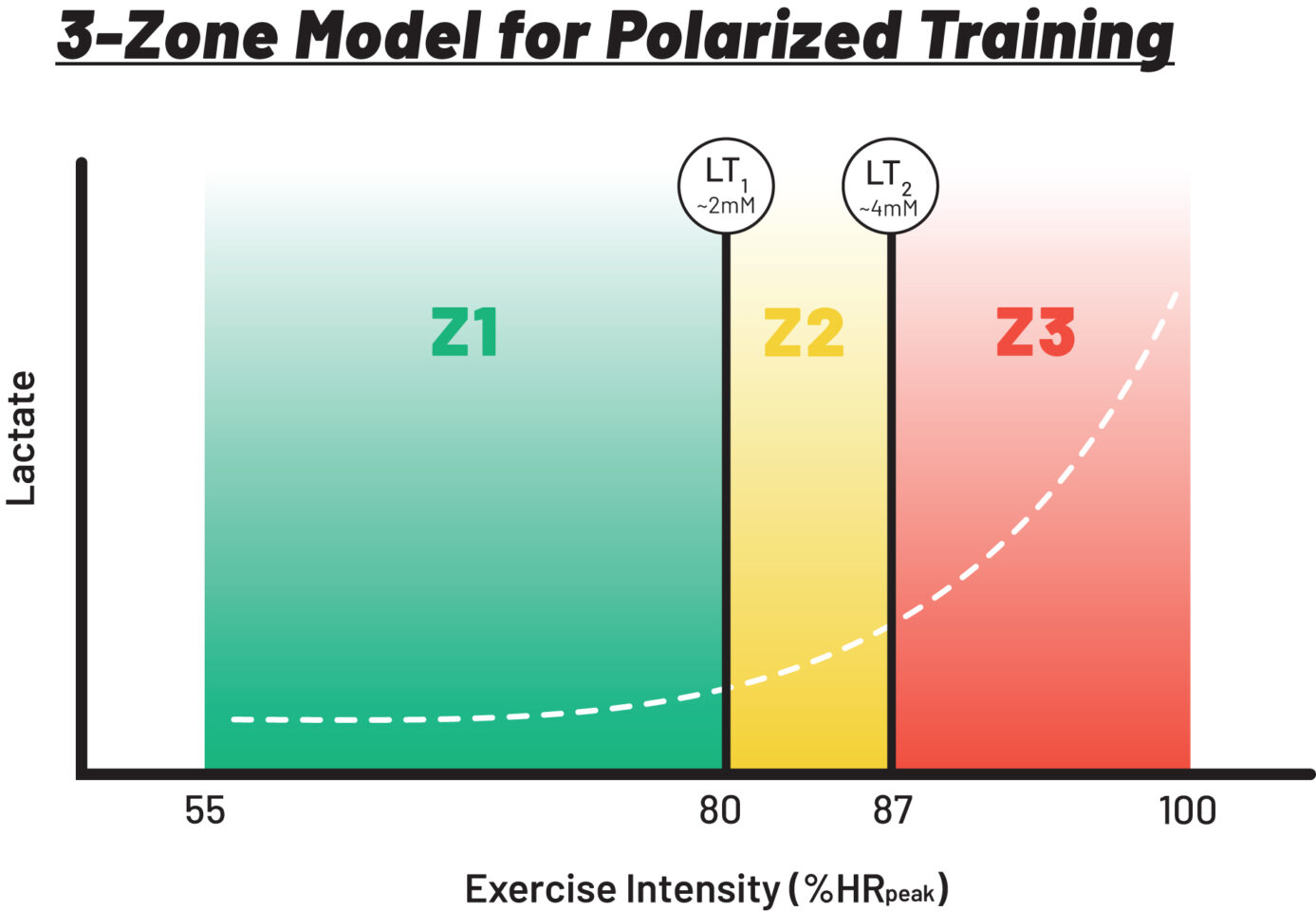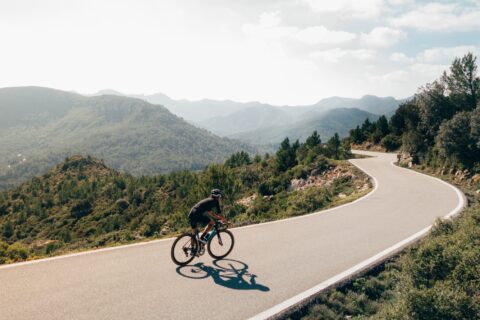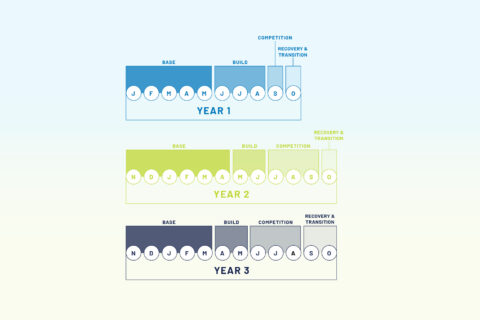Polarized training involves about an 80/20 mix of low- and high-intensity work, but that mix can and will change: it will likely look different in the base season compared to the weeks leading in to your “A” race. Listed below are a few key takeaways to help keep you on track throughout the year. And in this video, Polarized Training Throughout the Season, we do a deeper dive into this topic.
Note: the references to training zones in this piece refer to a three-zone model.
1. Your base phase should contain the biggest percentage of Zone 1 work.
In a 2007 study of elite U23 Spanish cyclists, their winter training cycle (November to February) showed them logging 78% of training hours in Zone 1, 20% of training hours in Zone 2, and just 2% of training hours in Zone 3. By contrast, in their spring training cycle (March to June), 70% of training hours were in Zone 1, 22% were in Zone 2, and 8% were in Zone 3.
2. Save the real Zone 3 work for your pre-competition and competition phases.
It can help to look at the overall season and think about which energy system you want to be training or targeting at each point in the year. For example, in the base phase, you’ll want to have a big focus on the lower intensity work (Zone 1) as well as some threshold work (that’s right on the edge of your Zone 2/Zone 3). You simply aren’t ready for a lot of the real Zone 3 work. But by the time you get to your pre-competition phase and your competition phase, that’s when you’ll want to be targeting the real higher-intensity sessions (but again, not more than ~20% of your sessions each week). The key difference is that the higher-intensity work is going to be true Zone 3.
3. Never neglect your Zone 1 work; it should always be the backbone of your training.
It’s important to highlight that as you move into your pre-competition and competition phases, although the intensity is notching up, there’s still a lot of maintenance work (Zone 1) going on. That’s always going to form the foundation of your training throughout the year.
4. Take a mid-season break and return to base work.
Regardless of your goals and where you are in your season, if you’re logging solid, consistent training volume then at some point in the year you’ll need to take a mid-season break (or similar) to really back down, rest, and go back to doing mostly base work. This period of time could be anything from one to three weeks and the focus should be similar to your base phase. For cyclists, this might mean really focusing on long slow rides. For triathletes, it might mean more swimming, dropping run volume, and getting out for more easy aerobic rides. Get your body back in balance again ready to hit it hard for the remainder of your season.
5. It takes discipline to truly train easy, but by doing so it means you’ll maximize your hard sessions.
Remember that it isn’t always easy following the polarized training approach. It takes discipline to keep your easy training exactly that, but remember that there will come plenty of times throughout the course of the season when you can go hard—and, if you’ve truly followed the polarized approach, you’ll really be ready to hit the higher-intensity work at the very best of your ability, which means you’ll really get the most from it and reap the rewards come race day.






